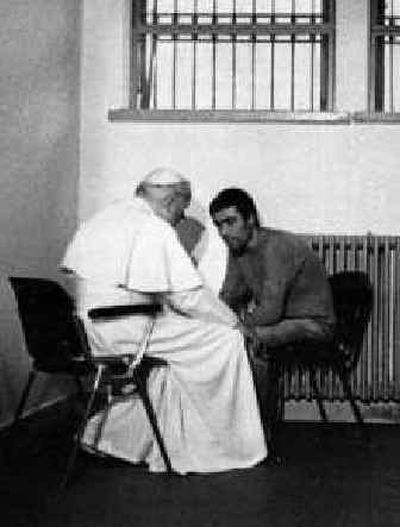Attempt on pope’s life brought changes

The 1981 assassination attempt on Pope John Paul II in St. Peter’s Square forever changed the way the pope appeared before his throngs of admirers.
It gave birth to the bulletproof “popemobile” that protected the pontiff when he rode through crowds of people.
But for many Roman Catholics, the assassination attempt at the hands of Mehmet Ali Agca, an escaped Turkish killer, was a historic event for what some deemed the pope’s miraculous recovery and willingness to forgive Agca.
“Certainly the most dramatic part of it was his own forgiveness of the assassin. That was remarkable,” said the Rev. Marvin O’Connell, a retired history professor at Notre Dame University. “I don’t know that it changed the papacy or any policy related to the papacy, but it changed him physically in that he had to go back to the hospital a couple of times because he came out too soon.”
The pope was waving to a crowd from an open convertible in St. Peter’s Square on May 13, 1981, when he was struck by two bullets and wounded in the abdomen, right arm and left hand. Two bystanders also were shot. Police immediately arrested the assailant, identified as Agca. An ambulance rushed the pontiff to a hospital. He was in surgery for six hours, and parts of his intestines were removed. He was fully recovered by October.
Reportedly, as the pontiff felt his life slipping away, he remembered the date – May 13 – as the same day in 1917 when the Virgin Mary appeared before three children in Fatima, Portugal. From that day on, the pope never stopped expressing his gratitude to Our Lady of Fatima.
“He considered that there was a second finger on the trigger that deflected the bullet, and attributed it to the Virgin Mary. He had such a deep devotion to her,” said Ken Schmitz, a fellow at the Pope John Paul II Cultural Center in Washington.
“I did hear from a colleague of mine who knew the doctor who performed the surgery. The doctor was quite amazed at how long the pope lived. The prognosis after such a severe wound was only about 10 years, but he lived long after that.”
The pope later publicly forgave Agca and visited him in prison. In 2000, Pope John Paul II granted clemency to Agca, who had been held for 19 years for the attempted assassination. Agca was then returned to Turkey to serve the remaining nine years of a 10-year sentence for killing a Turkish newspaper editor in 1978.